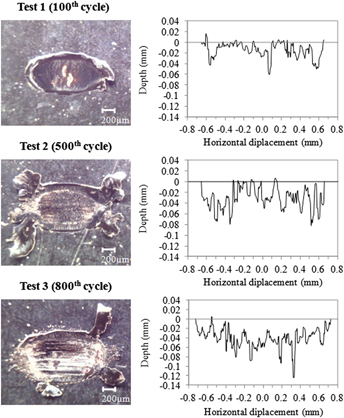Published online by Cambridge University Press: 06 January 2016

This paper investigates friction and wear between an electro-deposited coating and high carbon chrome steel. A ball-on-flat plate tribometer was developed, measuring tangential and normal displacements of a high carbon chrome steel ball. For the purpose of measuring displacements of a ball, laser displacement sensors were used. An electro-deposited coating was applied to a cold-rolled high strength steel plate. Displacement amplitudes of 0.2 and 1.0 mm were imposed to produce fretting and reciprocal sliding at contact. A steady-state value of the kinetic friction coefficient between an electro-deposited coating and high carbon chrome steel was found to be about 0.28. It was identified that wear volume on a coated specimen increased with the number of cycles. Correlation between the wear volume and a normal displacement of a ball was found to be linear. It was demonstrated that the proposed method is useful for understanding friction and wear of an electro-deposited coating.